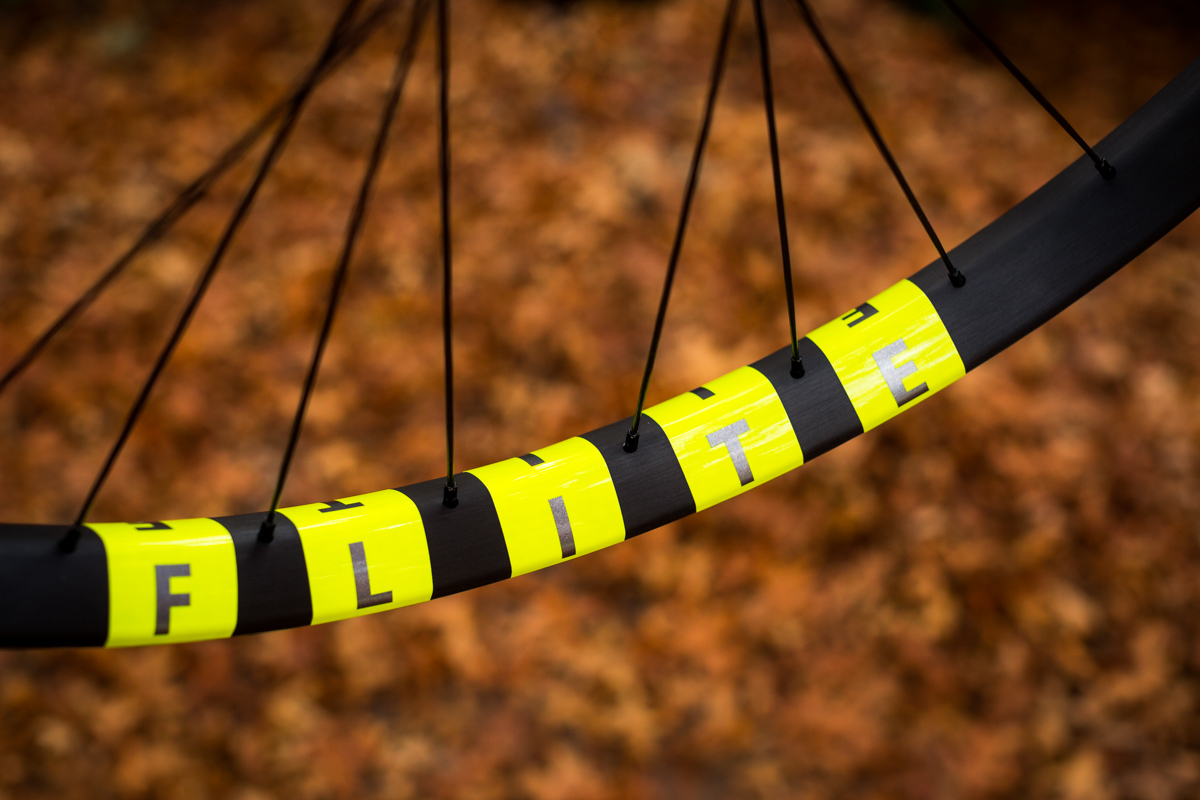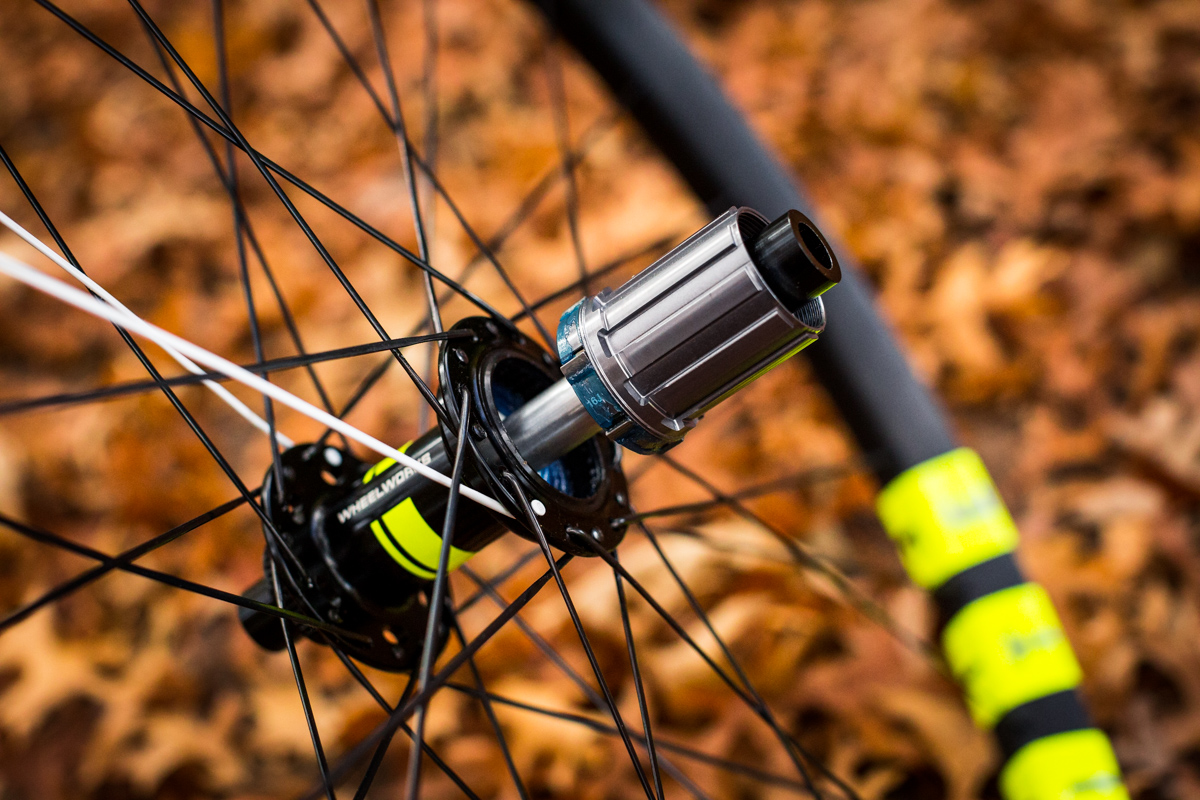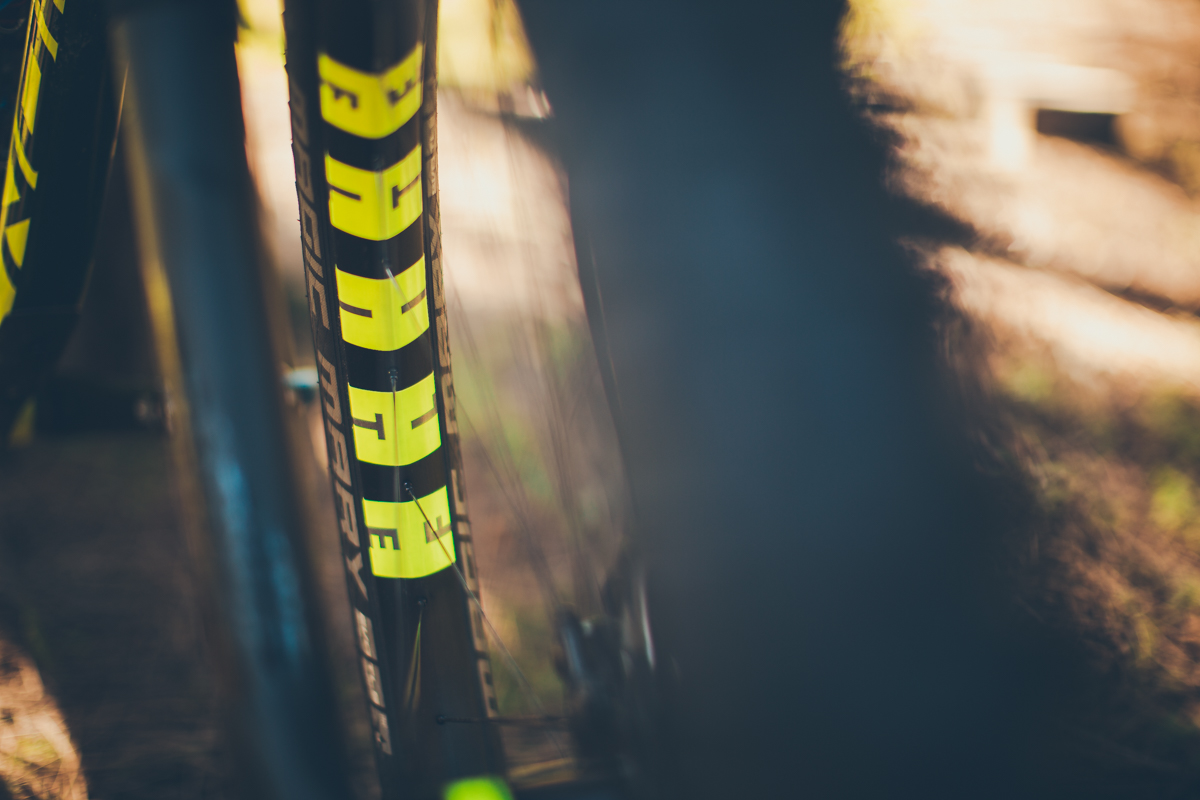Wheelworks wheels are not your average off-the-shelf wheel; they aim to offer a broad range of custom options predetermined from a consultation with the friendly folk at their Wellington, NZ headquarters. They’ll call you to discuss the options, on an actual phone if you wish, how personal is that! 
You can read all about the Wheelworks wheel building process and just why they feel confident in offering a lifetime warranty here, in our interview with Wheelworks founder Tristan Thomas. We recommend you have a read, as there are some interesting aspects to the process and Tristan does a great job of dispelling some popular myths about wheels.
“It all starts with a short conversation with the rider where we’ll talk about what bike they’re going on, what style of riding they’ll be used for, and how hard the customer is on equipment. We do a lot of bench-testing as well as ride testing so we know stiff different rims and combinations will be and how much they’ll weigh. All our staff ride so we’re able to combine the theoretical benefits with actual ride quality. We’ll also talk about colours to make sure their new Flite wheels look good on their bike.” – Tristan Thomas.
They are sold online, direct to the consumer with very impressive warranty terms; we’re talking lifetime warranty on hubs, rims, spokes and nipples. The options are plentiful, choose from rim widths, rim materials, hub brands, spokes and even decal colours to match your bike just right.

Let’s go shopping!
Following our review of the FLITE Wide Carbon wheels which resulted in a first-hand test of their warranty process as carbon met rock (the rock won and the ride was done) we picked out an aluminium set to try. The wheels were to be fitted to our mid-travel Norco Sight, we opted for the FLITE Wide Alloy Trail 29 wheels with Wheelworks’ own Dial hubs, all colour matched to the frame nicely.

The width.
The rims are very wide, 35mm wide internally. Why go so wide? The last few years have seen trail bikes, all mountain bikes and enduro bikes being fitted with wider rims. Long story short, with wide rims there is more air volume to dampen the ride, more support for your tyres when run at lower pressure and the result is mega traction. With that added traction climbs are not as slippery, corners feel grippy, and the bike responds to braking with more composure.
We’re seeing most ‘wide’ rim wheelsets hovering around the 27-30mm mark; we’re so used to it now we shudder when receiving a test bike with anything under 25mm, even cross country bikes with 19mm rims feel so outdated.

Can wide become too wide?
After riding a huge variety of wheels, we feel that around the 30mm mark is a good balance of traction, precision and support. We’d reserve 35mm rims for serious terrain, rocky and loose surfaces and root-riddled trails – the stuff we love! Take a bike with 35mm wide rims to buff trails and it is overkill, the weight and rolling resistance will drag you down. But take it to a trail where traction is rare, drop those pressures down, and you’ll be cleaning sections of trail like a champion.
What tyres?
Don’t go throwing any old set of tyres on 35mm rims; it’s important to match the rubber to the width. You’ll know if your tyres aren’t right if you can see the sidewalls bulging out past the tread, or the shape of the tyre goes somewhat square. Maxxis have a range of tyres in a particular shape designed for this; the WT (wide trail). Or you’ll be relatively safe with anything above 2.35-2.4 ish.

How’d they roll?
Replacing the wheels on the Norco (Raceface ARC 30) with the Wheelworks set (which use Raceface AR 35 rims) was surely not going to provide a vast amount of difference to ride. Or was it? The 5mm of extra width, combined with build quality, actually lifted the bike’s performance.

Straight away the wheels felt tight and ready, no pinging sounds came from the spokes on our first ride, the wheels were tensioned perfectly. The Dial hubs had significantly better engagement than the Shimano XT hubs they replaced, and the freehub was much smoother too.
We hammered the living daylights out of these wheels; we even sliced the rear tyre from slamming a sharp-edged rock we didn’t even see on one fast descent. A few dings emerged but the spokes didn’t lose tension, and they never went out of true. After three months of pounding, they are still straight, with no twiddling of spoke keys from us at all.
Upon reflection, we probably should have gotten more punctures during the three months; there are way more dings in the rims than the amount of punctures received.
How do they ‘feel’?
When talking wheels, the word ‘feel’ comes up a lot, especially when talking carbon vs. aluminium. These wheels lacked a little zing and pep that we expect from a lightweight pair of carbon wheels, but they had a feeling that we got to appreciate – tough. Throw the bike sideways and the wheels land with a thud, not a chatter, they bomb through rocks quietly and confidently.
The Dial hubs.
Wheelworks offer a bunch of hubs like Chris King, Hope, DT Swiss and their own branded hubs, the Dial (they sound like a dial of a safe). The rear hub has a very precise 72 point engagement freehub, something you’d only find on top end hubs, but Wheelworks spec the Dial hubs on their lower price point wheel builds.


Front hubs don’t typically demand our attention too much, there’s not much going on, but we did find this one a little frustrating when fitting into the bike. The end caps aren’t fixed, they hang loose when the hub is not clamped into the fork. So when dropping the fork onto the front hub, lining up the rotor in between the pads isn’t the only thing you need to take care with. The hub end caps need to be held into place with one hand while the other guides the wheel into the dropouts.
What are the rims?
“Unlike the Flite carbon wheels we develop in-house we do not produce our own aluminium rims and instead choose rims developed and sold by other companies. We’re a fully custom wheelbuilding company and we have access to basically any rim produced and if it suits the customers needs then we’ll source and build whatever is best. What we find is that some rims work better than others for certain applications and those are the rims we choose to stock and recommend. We’ve found the RaceFace ARC range to be well suited for XC and Trail riding and we’ll often suggest the ARC27 and ARC30 for XC use, and the ARC30 and ARC35 for trail use. These rims are wide and light and have good durability for trail use, but not great durability for Enduro so for a harder-hitting rider or bike we’ll use the DT Swiss 512 or 570. These DT Swiss rims are heavier than the ARC rims but stand up better to really aggressive riding.” – Tristan Thomas.
Carbon wheels break, right?
Traditionally speaking, carbon wheels crack where aluminium wheels ding, and it’s more common to see a trashed aluminium wheel still going after heavy abuse where carbon gets to a point where it just can’t go on. It’s a fine line to tread if you’re an aggressive rider, and even more so under pressures of racing. At the EWS in Derby we say many carbon wheels breaking, and occasionally saw bikes fitted with carbon wheels on the front, but aluminium out the back. While not everyone races their bikes, we can still understand why racers make those particular decisions. If we were racing enduro and serious about it, we’d go for something like these for security’s sake, for sure.
Weight, price, stuff like that?
We weighed them at 1900g on our Park Tool scales, which is ok, not fantastic. When comparing wheel weights, though, it’s key to compare apples to apples, these rims are 35mm wide and aluminium. The $1620AUD price gives us that same response, decent, but not a bargain. But again, it’s worth looking at the value of the product as a whole, not just the wheel. Warranty, local support (southern hemisphere is kinda local), custom options and the hand-built process. These guys prove that you can still get good old fashioned service AND purchase on online. In a way, it’s the best of both worlds. 
Yay, or nay?
If you’re investing in your bike and want to upgrade, you can’t go past wheels as an area with room for improvement. If your bike is a few years old and running standard narrow-ish rims, these would be a great upgrade, and yes we agree this is a long review for a set of wheels, but there’s just a lot going on.
Hard on wheels? Ride loose trails? Consider these.